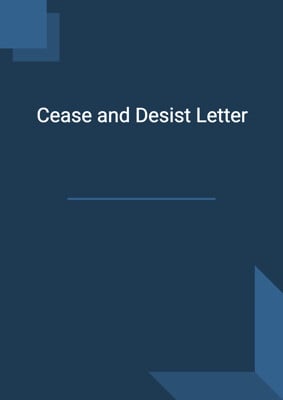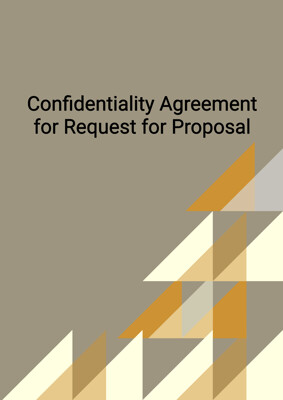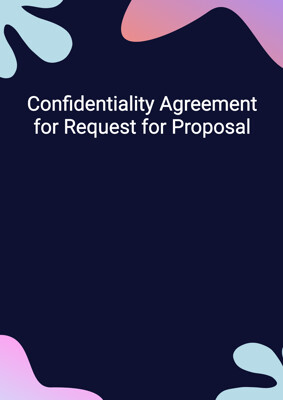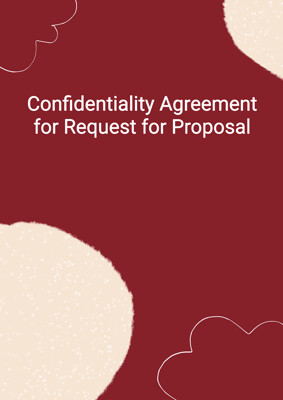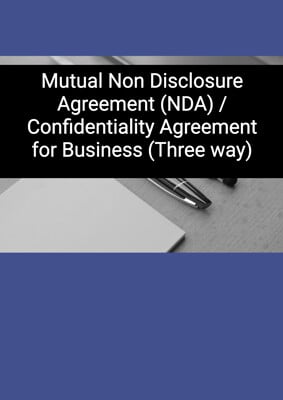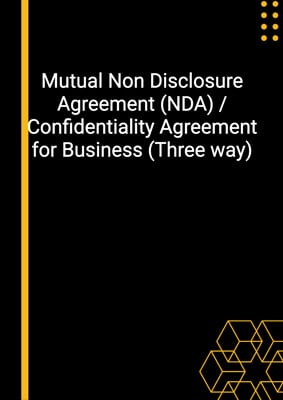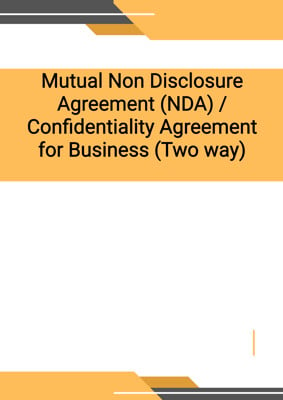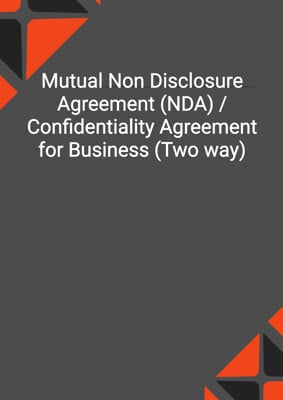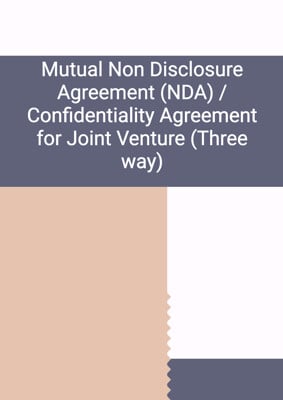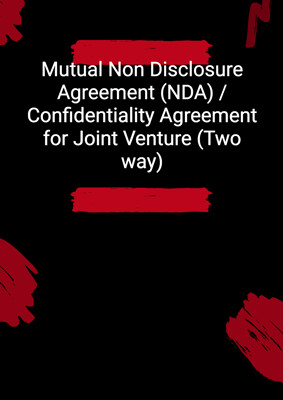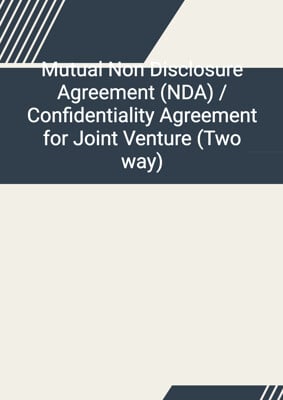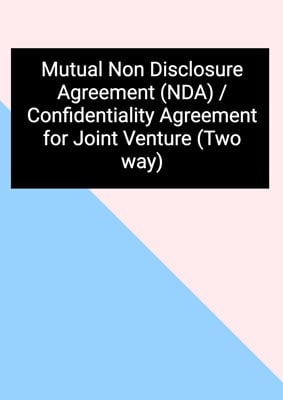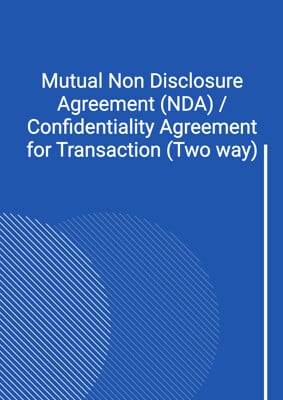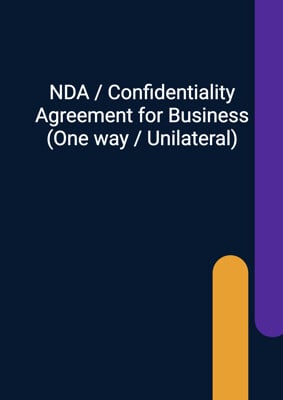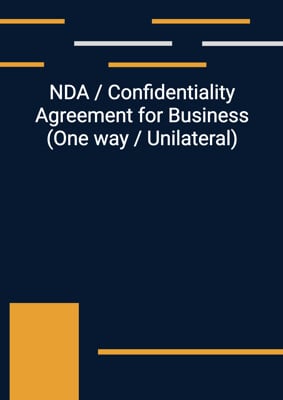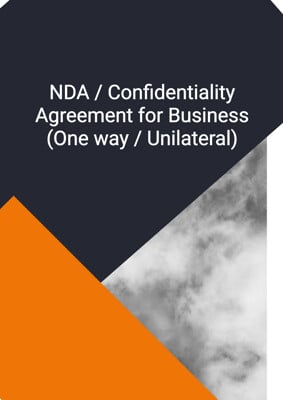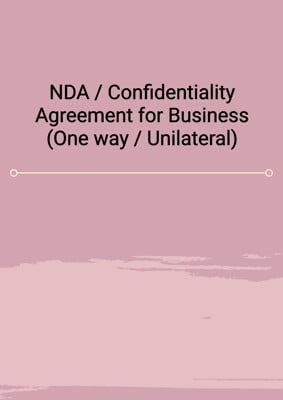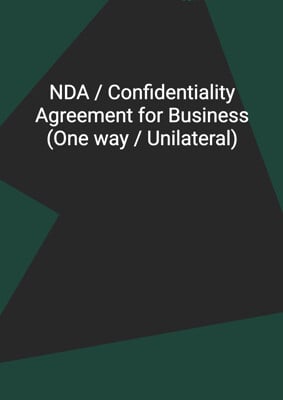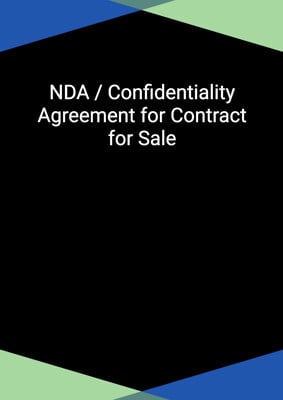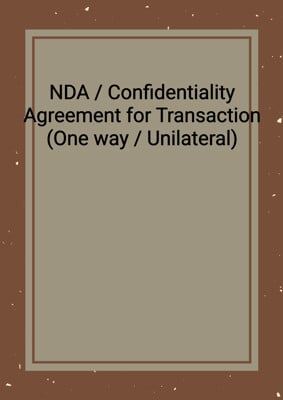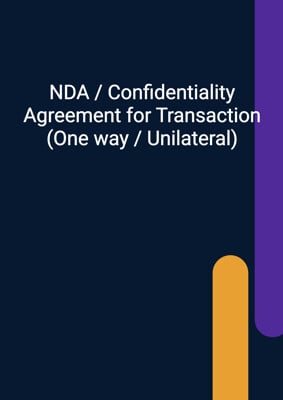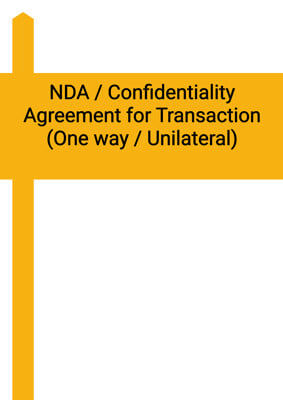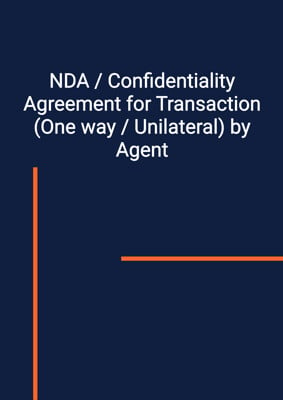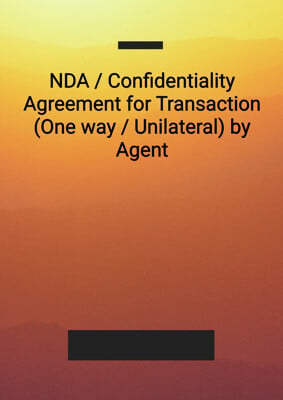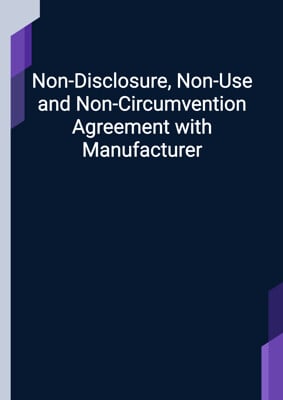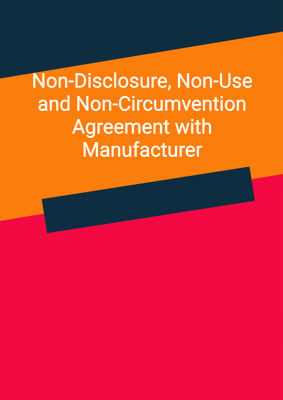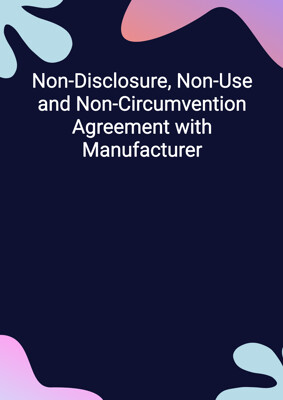
Mutual Non Disclosure Agreement (NDA) / Confidentiality Agreement for Transaction (Two way)
Strict / Tight
Protect your business secrets with a Mutual Non-Disclosure Agreement (NDA)/Confidentiality Agreement for Transaction (Two Way). Our strict and tight agreement keeps your information confidential. Trust us to safeguard your business.
How to Tailor the Document for Your Need?
01
Create Document
Fill in the details of the parties. You can click the "Fill with Member’s Information" button to complete it with information saved to your account.
02
Fill Information
Please fill in any additional information by following the step-by-step guide on the left hand side of the preview document and click the "Next" button.
03
Get Document
When you are done, click the "Get Document" button and you can download the document in Word or PDF format.
04
Review Document
Please get all parties to review the document carefully and make any final modifications to ensure that the details are correct before signing the document.
Document Preview
Document Description
The Mutual Non Disclosure Agreement (NDA) / Confidentiality Agreement for Transaction (Two way) is a legal document that is entered into by two parties, Party 1 and Party 2, who are considering engaging in a transaction together. The purpose of this agreement is to protect the confidential information that will be exchanged between the parties during the course of the transaction.
The agreement begins with an interpretation section, which defines key terms used throughout the document. This ensures that both parties have a clear understanding of the terminology used.
The obligations of confidentiality are outlined in Section 2 of the agreement. Each party agrees to maintain the confidentiality of the information provided by the other party and to use it exclusively for the purpose of evaluating the transaction. The agreement also prohibits the copying, reproduction, or storage of the information without the prior written approval of the disclosing party.
Section 3 of the agreement outlines the confidentiality measures that each party must take to protect the disclosed information. This includes not disclosing the information to anyone other than approved representatives, keeping the information separate from other documents and records, and implementing security measures to prevent unauthorized access.
The agreement also addresses exceptions to the confidentiality obligations in Section 4. For example, the obligations do not apply to information that is already publicly available or previously known to the receiving party. The agreement also allows for disclosure of the information if required by law.
Section 5 of the agreement addresses the return of information. Each party is required to return or destroy all documents and materials containing the information upon request, and to remove any stored information from computer systems.
The agreement includes disclaimers and warranties in Section 6, which state that no representation or warranty is made regarding the accuracy or completeness of the information. The parties also agree that they will not have any liability to each other resulting from the use of the information.
Confidentiality provisions continue in Section 7, which includes obligations to keep the existence and nature of the agreement confidential and to refrain from contacting representatives of the other party without prior written consent.
Section 8 addresses remedies for breach of the agreement, including the right to seek injunctive relief and indemnification for any losses or harm caused by the breach.
The agreement concludes with provisions regarding waiver, assignment, entire agreement, intellectual property rights, governing law and jurisdiction, notices and service, and rights under contracts for third parties.
Overall, this agreement is essential for protecting the confidential information exchanged between Party 1 and Party 2 during the course of their transaction. It sets out clear obligations of confidentiality and provides remedies for any breaches of those obligations.
How to use this document?
To use this Mutual Non Disclosure Agreement (NDA) / Confidentiality Agreement for Transaction (Two way), follow these steps:
1. Review the agreement: Read through the entire agreement to familiarize yourself with its terms and obligations.
2. Fill in the parties' information: Enter the names and addresses of Party 1 and Party 2 in the designated sections of the agreement.
3. Understand the interpretation section: Take note of the definitions provided in the interpretation section to ensure a clear understanding of the terminology used throughout the agreement.
4. Obligations of confidentiality: Understand the obligations outlined in Section 2, which include maintaining the confidentiality of the information and using it exclusively for the purpose of evaluating the transaction.
5. Confidentiality measures: Implement the confidentiality measures outlined in Section 3, such as restricting access to the information and implementing security measures to protect it.
6. Exceptions to confidentiality: Familiarize yourself with the exceptions to the confidentiality obligations outlined in Section 4, such as information that is already publicly available or previously known to the receiving party.
7. Return of information: Be prepared to return or destroy all documents and materials containing the information upon request, as outlined in Section 5.
8. Disclaimers and warranties: Understand the disclaimers and warranties provided in Section 6, which state that no representation or warranty is made regarding the accuracy or completeness of the information.
9. Confidentiality provisions: Adhere to the confidentiality provisions outlined in Section 7, including keeping the existence and nature of the agreement confidential and obtaining prior written consent before contacting representatives of the other party.
10. Remedies for breach: Understand the remedies available in the event of a breach of the agreement, as outlined in Section 8, including the right to seek injunctive relief and indemnification for any losses or harm caused.
11. Additional provisions: Familiarize yourself with the additional provisions of the agreement, such as waiver, assignment, governing law and jurisdiction, notices and service, and rights under contracts for third parties.
12. Seek legal advice if necessary: If you have any questions or concerns about the agreement, consult with a legal professional to ensure that you fully understand its implications and obligations.
By following these steps, you can effectively use the Mutual Non Disclosure Agreement (NDA) / Confidentiality Agreement for Transaction (Two way) to protect the confidential information exchanged during your transaction with the other party.
Not the right document?
Don’t worry, we have thousands of documents for you to choose from:
